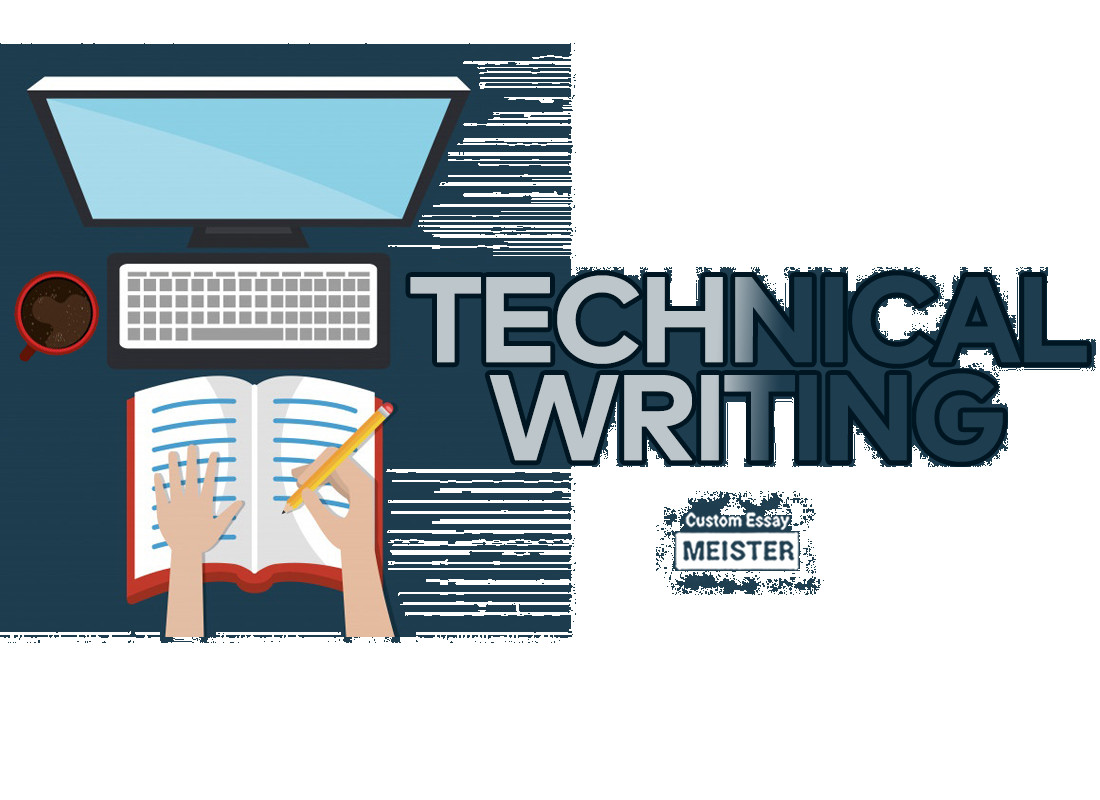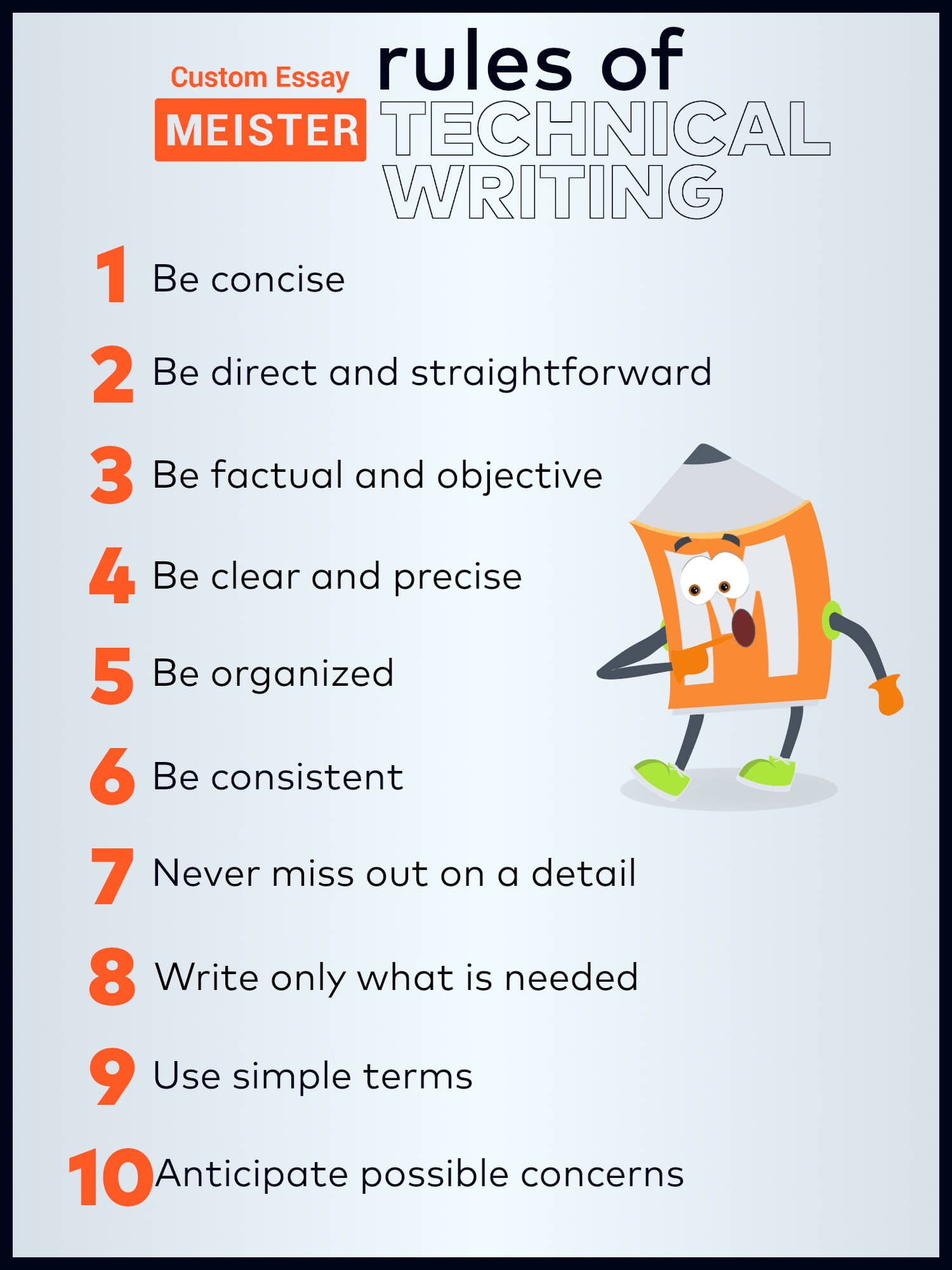15% discount on first order.
Special Welcome Offer.0
days00
hours00
minutes00
secondsRules of Technical Writing

What is technical writing? It is a kind of writing that is utilized for instruction about processes such as assemblies, repairs, and other technical aspects of a subject. The most common examples of technical writing is instruction manuals of appliances and gadgets.
The two keywords of technical writing are “facts ” and “instructions.” If you read the nearest instruction manual to you, you will be met with a volley of information about how to do specific processes, all direct, straightforward, and understandable. Every other instruction manual is barely any different: it is all about factual instruction.
If you are interested in learning much about technical writing, then you must acknowledge that there are some bits that you have to know about technical writing—namely, rules of technical writing that you must follow.
What makes technical writing different from other types of writing?
Before anything else, you have to understand what makes technical writing different from, say, academic writing. Here are a few points that makes technical writing stand out:
- It is purely instructive. Primarily, the goal of technical writing is to instruct. While academic writing is similar to this, what makes technical writing different is that it is concerned with tangible objects such as washing machines, faucets, computers, appliances in general and how to assemble or fix them, as well as systematic processes such as reporting to your supervisor in the office.
- It is completely factual. Unlike academic writing, where there is usually an attempt to make additions to the academe by making arguable claims, technical writing only talks about how to do something, period. It is something that should never be argued with, as deviating from a certain process would often lead to an incident or mishap.
- It is never opinionated. Finally, technical writing absolutely closes itself off from opinions. Much of academic writing consists of “I think...” and “I claim that…” With technical writing, you should concern yourself with only facts, but never opinions.
With that said, it must be acknowledged that technical writing is a somewhat delicate type of writing, and there are certain rules that must be followed to engage in effective technical writing. Below is a list of ten rules of technical writing.

1. Be concise
Whenever you engage in technical writing, you must always make sure that the text you are making is short . This is because your readers want easy access and understanding towards something. Having massive blocks of text will discourage them from reading your piece, no matter how simple it may be.
Using one or two sentences to relay a piece of information is usually sufficient, though it really depends on what kind of information you are dealing with. Generic user manuals, for instance, utilize lists in the form of bullet points and numberings for best use.
2. Be direct and straightforward
The moment that your reader looks at the next line in your technical writing, he/she should already understand what it is trying to mean. This means no figures of speech like simile, metaphor, personification, and the like, and no wordplay—sorry, creative writers.
3. Be factual and objective
Technical writing is about, well, being technical. This means the only concern is facts—and being factual. Your readers are not looking for an opinion; they are looking to be instructed about a specific device, model, or ruleset. Hence, you should never include opinions or speculations in the technical writing piece.
4. Be clear and precise
Understandability and clarity are two of the main components of effective technical writing. Absent these will lead to poor technical writing, resulting in confused readers. Hence, every sentence you write and every process you instruct about must be easily understandable by any reader, regardless of specialty.
5. Be organized
This is one of the most essential rules of technical writing and goes back to the first one about being concise—only here, you have to acknowledge the importance of flow and structure . If there are numerous processes and rulesets involved in a specific concept or device, you must lay them out in such a way that your readers will not only be able to understand what is being instructed but also be able to shift from one process to another in a very accessible, convenient method.
Consequently, not being organized leads your readers to scratch your head, confused. If your readers personally ask questions about the topic—questions that you already addressed in your technical writing— there is a high chance that your writing was not organized.
6. Be consistent
When you are writing about process A in a specific section, only write about process A there; if you are writing only about process B, write only about process B, and so on.
To be more concrete, if you are instructing about how to assemble a washing machine, your list flow should not include basic information about each part. Such information should be reserved for another section, put together specifically to explain each part.
Again, the main objective is to make sure that your readers are guided well and accordingly throughout given processes.
7. Never miss out on a detail
One of the most vital rules of technical writing is always aspiring to be complete in details . A finished product of technical writing is one that never leaves out any relevant detail, no matter how insignificant it seems. One of the worst case scenarios is when you forget to add some details that can critically hinder the readers’ experience and convenience.
The most effective way to avoid this problem is to write an outline . Just like in any other kind of writing, having an outline right by your side will be very useful. No longer do you have to worry about whether or not you missed out on a detail. When in doubt, always check your outline.
8. Write only what is needed
Just as you should never miss out on a detail, so should you also never write what is not needed. Those who read your technical writing pieces expect only the important stuff. Credibility defines what is technical writing. If you write something out of the ordinary, or something that is irrelevant to the subject matter, your work will be less credible and your readers will not take your technical writing seriously—and seriousness is the name of the game for technical writing.
Again, having an outline is vital here to make sure that you put only what is important.
9. Use simple terms
Surmount the imminent risk of incomprehensibility through utilizing foundational use of language—or, simply, let your readers understand by using simple language.
When it comes to technical writing, one does not need to go crazy with language and use incredibly complex terms just for show. The real flair behind technical writing is to be accurate and factual, as that is its whole point. Poems can be open to interpretation; it would be very problematic if your user manual on assembling a table would be open to interpretation, too. Again, just use simple terms and things will be simple.
Quick tip: Technical writing pieces are typically in the second person perspective, so using the pronouns “you” and “your” is permitted.
10. Anticipate possible concerns
Let us say that you have written everything that there is to know about every process covered by the topic that you are writing about. Is there anything else that you have to write? Yes, actually—you need to anticipate any concerns that your readers might raise.
One of the most essential, though admittedly hidden, technical writing is to have a contingent mindset, prepared to readily tackle and issues that may give rise outside of your scope and control. This is okay, as we never have 100% control over anything. However, that does not mean you are not responsible for writing about what to do about it. Reserve a “troubleshooting” section where special concerns and issues may be addressed.
Instruction manuals and other technical writing pieces usually have a disclaimer where the reader is told to consult a technician or a specialist on the matter. This should be included in your own piece, too.
Custom technical writing service
The rules of technical writing and the craft behind it requires precision and attentiveness to objectivity. For those who are inclined to facts and accuracy, technical writing can be a potential career prospect and a gateway to some big-league industries. However, it will seem unattractive to those who delve more into creativity. We at CustomEssayMeister acknowledge and endorse the benefits of being versatile in every type of writing. However, being specialized in many writing styles can prove very difficult. If you are a student who struggles with a technical writing assignment, you do not need to suppress your creative juices. Within our writing roster, we have a variety of experts, with some having a penchant for creative writing while others with a specialty in technical writing. With a few clicks, you can enjoy their services right away and get the academic help you need. Custom essays, custom research papers, custom dissertations, custom term papers: we can help you out—that is a fact.